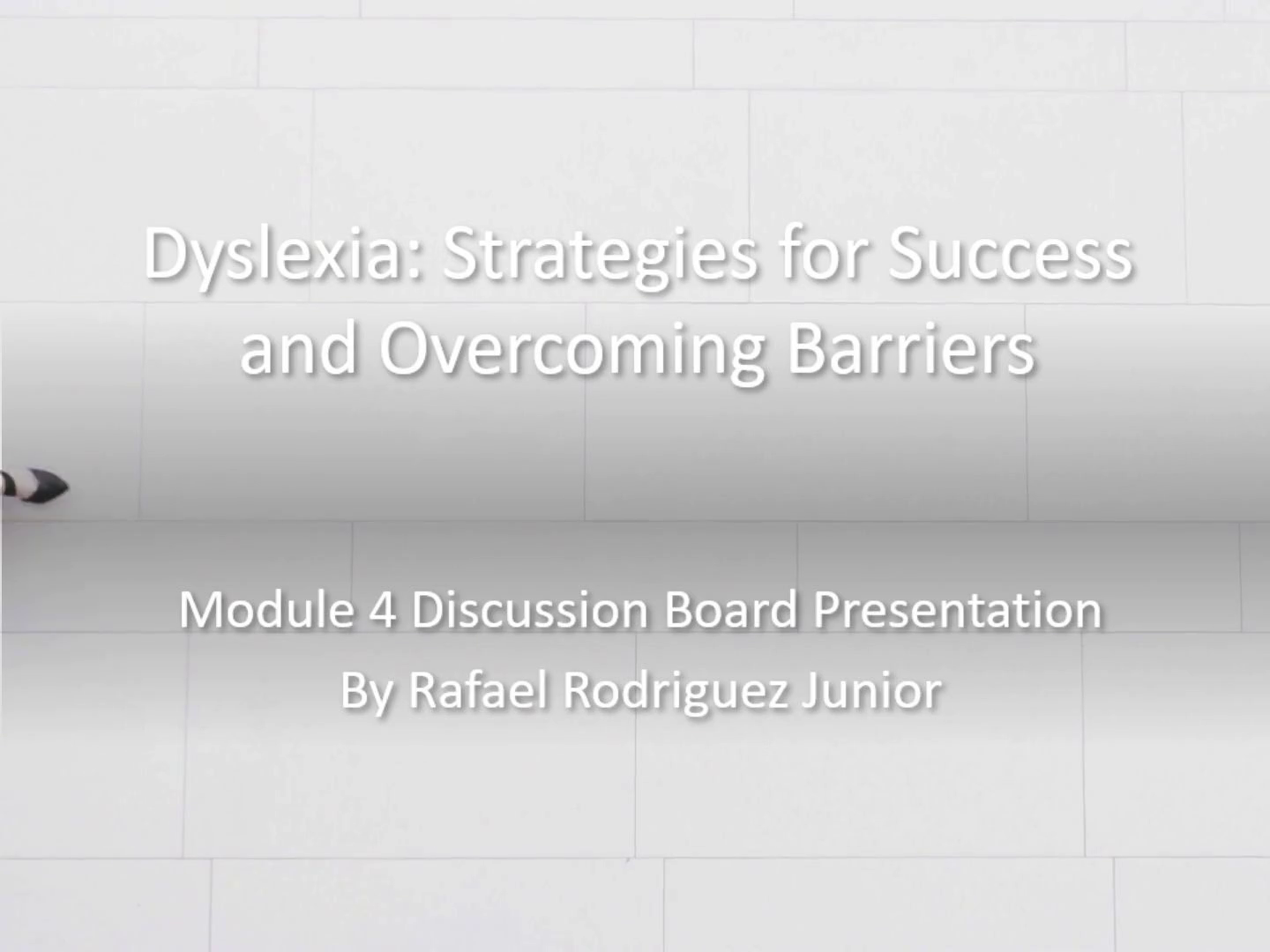
Dyslexia: Strategies for Success and Overcoming Barriers
Scene 1 (0s)
Bird's Eye View Of People Walking. [Virtual Presenter] Slide 1: Title "Dyslexia: Strategies for Success and Overcoming Barriers" Hello, my name is Rafael Rodriguez Junior, and welcome to my presentation titled “Dyslexia: Strategies for Success and Overcoming Barriers.” Today, I’ll be sharing five effective strategies that support students with dyslexia, along with five common barriers faced by students, parents, and schools..
Scene 2 (30s)
[Virtual Presenter] Slide 2: Introduction Dyslexia is a specific learning disability that affects reading, writing, and spelling. It impacts individuals across all age groups and can hinder both academic progress and personal confidence. By exploring strategies and understanding barriers, we can create better support systems in both the classroom and at home..
Scene 3 (54s)
[Virtual Presenter] Slide 3: Strategy 1 – Multisensory Learning One of the most effective methods for teaching students with dyslexia is using multisensory learning. This approach engages visual, auditory, and kinesthetic senses all at once. Programs like Orton-Gillingham use this method to help students build stronger reading and spelling skills by making learning more interactive and memorable..
Scene 4 (1m 24s)
[Virtual Presenter] Slide 4: Strategy 2 – Assistive Technology Technology can be a powerful tool. Text-to-speech software, audiobooks, and word processors with spell check features enable students with dyslexia to access content more independently. These tools reduce frustration and help level the playing field academically..
Scene 5 (1m 49s)
[Virtual Presenter] Slide 5: Strategy 3 – Structured Literacy Instruction Structured literacy is another proven strategy. This method teaches foundational reading skills like phonics, phonemic awareness, vocabulary, and comprehension in a direct, sequential, and systematic way. For dyslexic learners, clear and consistent instruction can make a significant difference..
Scene 6 (2m 17s)
[Virtual Presenter] Slide 6: Strategy 4 – Classroom Accommodations Simple accommodations in the classroom can be life-changing. Providing extended time on tests, offering oral testing options, and avoiding having students read aloud can lower stress and give students a fair chance to demonstrate their knowledge and succeed..
Scene 7 (2m 50s)
[Virtual Presenter] Slide 7: Strategy 5 – Parental Involvement Parents play a key role. When they understand dyslexia and work closely with teachers, students benefit from consistent support both at school and home. Encouraging, informed, and proactive parental involvement can greatly improve student outcomes..
Scene 8 (3m 15s)
[Virtual Presenter] Slide 8: Barrier 1 – Late or Inaccurate Diagnosis A major barrier is a delayed or missed diagnosis. When dyslexia is not identified early, students may struggle unnecessarily and fall behind. Early screening and intervention are critical to avoid long-term academic and emotional issues..
Scene 9 (3m 43s)
[Virtual Presenter] Slide 9: Barrier 2 – Limited Teacher Training Many teachers are not fully trained to recognize or support students with dyslexia. Without proper knowledge or strategies, these students might not receive the help they need, further widening the achievement gap. Ongoing professional development is essential..
Scene 10 (4m 6s)
[Virtual Presenter] Slide 10: Barrier 3 – Insufficient School Resources Some schools lack the funding or resources to provide specialized staff, tools, or programs. This shortage can severely limit the effectiveness of interventions, leaving students without the tailored support they require..
Scene 11 (4m 27s)
[Virtual Presenter] Slide 11: Barrier 4 – Emotional and Social Challenges Dyslexia doesn’t just affect academics—it affects emotions too. Students may feel anxious, embarrassed, or frustrated, especially if they’re constantly comparing themselves to their peers. This emotional toll can affect motivation and engagement in learning..
Scene 12 (4m 53s)
[Virtual Presenter] Slide 12: Barrier 5 – Parental Stress and Lack of Support Parents, especially those unfamiliar with dyslexia, may feel overwhelmed. They might not know how to advocate for their child or where to find help. Without proper support, it becomes harder for them to be strong allies in their child’s education..
Scene 13 (5m 16s)
[Virtual Presenter] Slide 13: Conclusion In conclusion, supporting a student with dyslexia takes teamwork—between educators, families, and the students themselves. Through proven strategies and by addressing common barriers, we can foster a more inclusive and empowering learning environment for all..